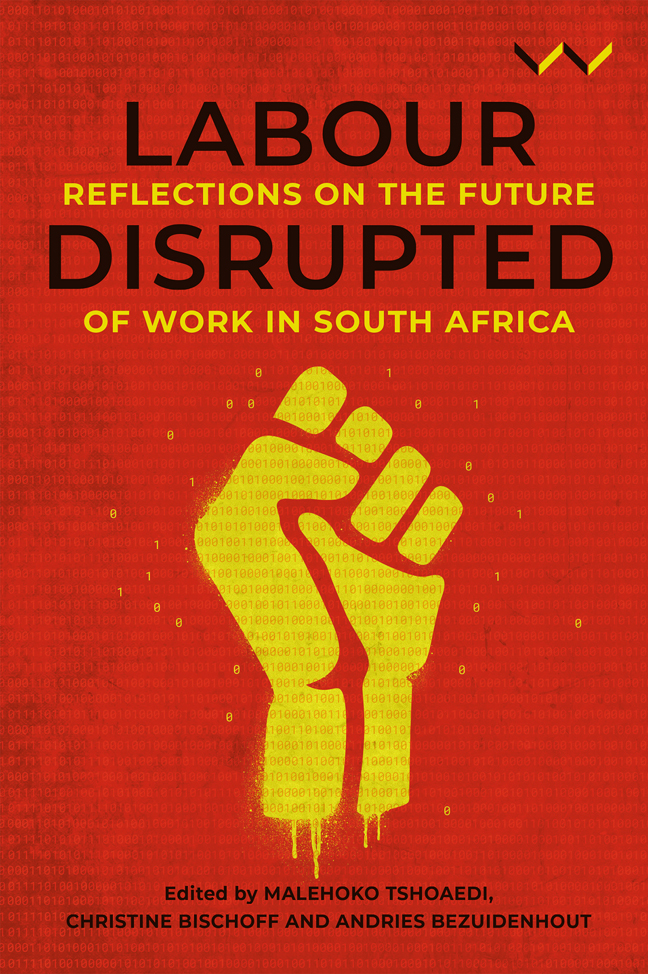Book contents
- Frontmatter
- Contents
- Figures and Tables
- Acknowledgement
- Acronyms
- Introduction: Disruptions and New Directions in South African Labour Studies
- Chapter 1 Fragmented Labour Movement, Fragmented Labour Studies: New Directions for Research and Theory
- PART I Changing Solidarities
- PART II Technology and Work
- PART III New Forms of Organising
- PART IV Labour and Lockdown
- Conclusion: Questions, Answers and New Directions
- Contributors
- Index
Chapter 9 - Why Other Spaces Matter: The Case of Mamelodi Train Sector
Published online by Cambridge University Press: 01 March 2024
- Frontmatter
- Contents
- Figures and Tables
- Acknowledgement
- Acronyms
- Introduction: Disruptions and New Directions in South African Labour Studies
- Chapter 1 Fragmented Labour Movement, Fragmented Labour Studies: New Directions for Research and Theory
- PART I Changing Solidarities
- PART II Technology and Work
- PART III New Forms of Organising
- PART IV Labour and Lockdown
- Conclusion: Questions, Answers and New Directions
- Contributors
- Index
Summary
INTRODUCTION
In his overview of South African labour studies in this volume, Lucien van der Walt raises the emergence of the notion of social movement unionism (SMU) as an explanatory category. He also questions the applicability of the concept in contemporary times. In this chapter, I would like to disrupt this conversation by making a geographic move. Rather than focusing on the workplace as site for union organising and the community as site for social activism, I draw on very specific worker experiences with organising in transit between home and work in order to revive and recast discussions about SMU. The Mamelodi Train Sector (MTS) was formed in 2001 in Tshwane; it organises both formal and informal as well as unionised and non-unionised workers. It is a train-based organisation focusing on commuters, and has formal links to the ruling Tripartite Alliance consisting of the African National Congress (ANC), the South African Communist Party (SACP) and the Congress of South African Trade Unions (Cosatu). The discussion is timely for three reasons. First, it takes place at time when traditional unions struggle to attract marginalised workers into their ranks. Second, there are debates around whether the SMU of the past could be revived. Third, workers’ traditional forms of power are being challenged and fragmented. Drawing from MTS as a case study, this chapter attempts to demonstrate that key building blocks characteristic of the SMU of the 1980s are still prevalent within large sections of the working class in South Africa. I propose that by organising on the train, MTS has managed to keep aspects of SMU alive. Drawing on organisational repertoires characteristic of the 1980s, organisations such as MTS demonstrate that, rather than sound the alarm bells around the death of SMU, Cosatu has merely outsourced these organisational traits.
This chapter is in conversation with two recent scholarly publications interested in community–labour alliances. Marcel Paret (2015) has sought to asses prospects for union–community collaborations and, more recently, Janet Cherry (2017) explored the relationship of Cosatu members to the community and the extent to which they are two classes in South Africa. The one group is in formal employment and resides in formal townships, while many members of the community are located on the margins of the economy and are without jobs. In conclusion, Paret and Cherry raise some serious weaknesses regarding organised labour and Cosatu as a federation.
- Type
- Chapter
- Information
- Labour DisruptedReflections on the Future of Work in South Africa, pp. 187 - 204Publisher: Wits University PressPrint publication year: 2023

